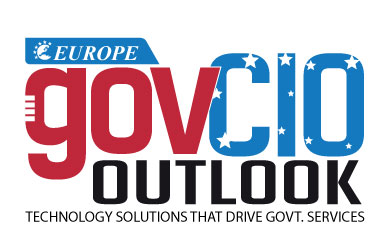Welcome back to this new edition of Gov CIO Outlook !!!✖
SEPTEMBER 2025 19GOVERNMENT CIO OUTLOOKAI'S ROLE IN REDEFINING FEDERAL ACQUISITION STRATEGYbecome accustomed to the higher caliber of submissions facilitated by AI, the general expectation for well-structured, persuasive, and data-driven proposals inevitably rises. This prompts agencies to consider how their internal processes can adapt to accommodate or even replicate the efficiencies and analytical depth demonstrated by AI-assisted industry proposals.The ripple effect extends to the very structure and clarity of federal solicitations themselves. As commercial AI tools become more sophisticated at deconstructing and interpreting RFPs, there's a growing incentive for government agencies to issue more precise, unambiguous, and machine-readable solicitations. Ambiguity can lead to varied interpretations by AI systems, potentially resulting in non-compliant or less competitive bids. Therefore, the widespread use of AI on the industry side implicitly encourages a move towards greater standardization and clarity in government procurement documents, ultimately benefiting both parties by streamlining the bidding process. Agencies are increasingly aware that poorly structured or vague solicitations can disadvantage both themselves and the vendors, and AI's ability to highlight these ambiguities is accelerating the push for better-designed RFPs. This evolution means that the language, structure, and even the format of federal procurement documents are being gradually influenced by the need to be effectively processed by AI, resulting in a more standardized and accessible contracting environment.Informing Future Acquisition PolicyCommercial entities utilize AI to analyze market trends, understand agency buying behaviors, and gain insights into typical award pricing. This intelligence allows them to make more informed go/no-go decisions and strategize their bids with greater precision. As government agencies observe the increasingly sophisticated and data-informed proposals they receive, there's a natural inclination to explore how AI can similarly enhance their own market research, vendor evaluation, and acquisition planning processes. This creates a feedback loop in which industry innovation inspires governmental adaptation and, ultimately, policy development.The transformative impact is also evident in the discourse surrounding the future of federal procurement. Policy discussions are increasingly focused on how to responsibly integrate AI into government operations, reflecting the advancements already seen in the commercial sector. This includes considerations of developing guidelines for the ethical and transparent use of AI, ensuring data security and privacy, and fostering a skilled workforce capable of leveraging these advanced tools. The experience of the commercial sector in deploying and refining AI for proposal generation serves as a valuable proving ground, offering insights and lessons learned that inform the development of federal policy and standards. As the industry continues to push the boundaries of AI applications in proposal writing, government regulators and policymakers are compelled to consider the implications for fairness, competition, and public trust. This consideration actively shapes future acquisition policies and standards to account for these evolving technological capabilities. This interplay ensures that federal standards remain relevant and practical in an increasingly AI-driven procurement ecosystem.The commercial adoption of AI for proposal generation is not merely a technological advancement for individual businesses; it is a catalyst for systemic change within the federal procurement system. By demonstrating unprecedented levels of efficiency, compliance, and strategic depth, AI is subtly but surely reshaping the expectations and operational frameworks of government contracting. The collaborative potential between industry innovation and government standards will undoubtedly lead to a more streamlined and effective federal acquisition, characterized by accuracy, transparency, and strategic alignment between the public and private sectors.
< Page 9 | Page 11 >
< Page 9 | Page 11 >
